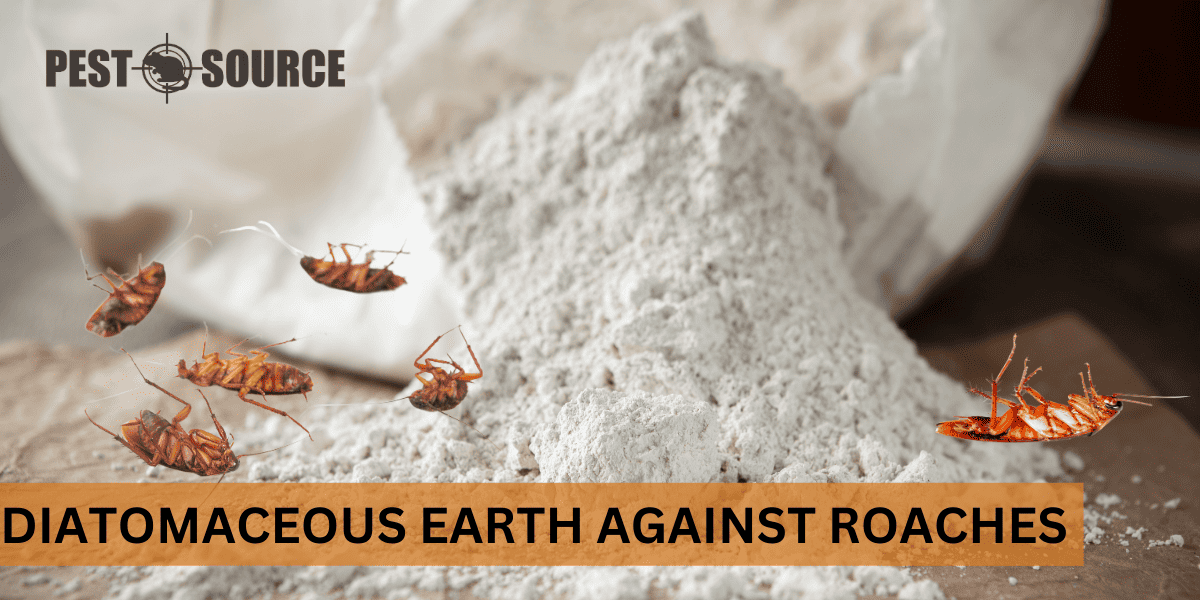Diatomaceous earth is an effective natural insecticide against cockroaches. This article explains how diatomaceous earth works to dehydrate and kill roaches, and provides guidance on its application.
POINTS
- Diatomaceous earth kills cockroaches by piercing their exoskeletons, leading to dehydration and death, and it is effective because cockroaches cannot develop immunity to this mechanical method of pest control.
- Proper application of diatomaceous earth is crucial; it should be applied in thin layers in areas where roaches are likely to hide or travel, and it can also be used in bait stations or as a perimeter barrier around the home.
- The effectiveness of diatomaceous earth can vary, with factors such as the roach lifecycle, environmental conditions, and roach exposure to the treated areas playing significant roles; results may take a few days to a couple of weeks to become evident.
- Food-grade diatomaceous earth is the recommended type for pest control around humans and pets due to its non-toxic nature, but precautions should still be taken to avoid inhalation, ingestion, and contact with eyes and skin.
- Diatomaceous earth should be considered as part of an integrated pest management approach, combining it with preventive measures, other roach control methods, and professional guidance if necessary for comprehensive roach management.
Does Diatomaceous Earth Kill Cockroaches? Understanding Its Effectiveness
When it comes to dealing with cockroaches, homeowners and pest control enthusiasts often seek effective and natural solutions. One such solution that frequently comes up is diatomaceous earth. But does diatomaceous earth actually kill cockroaches? Let’s dive into the science behind its effectiveness, especially against persistent pests like German roaches.
How Diatomaceous Earth Affects Cockroaches
Diatomaceous earth is a powdery substance made from the fossilized remains of diatoms, a type of algae. Its microscopic sharp edges can pierce the exoskeletons of cockroaches, leading to dehydration and death. This mechanical action ensures that cockroaches cannot develop immunity to diatomaceous earth, as they can with chemical pesticides.
However, while it is effective, diatomaceous earth is not a quick-kill solution. Cockroaches must come into contact with the powder for it to work. Its efficacy is also influenced by the environment; it’s less effective in humid conditions as moisture can cause the powder to clump and become less lethal to pests.
Limitations of Using Diatomaceous Earth for Cockroach Control
While diatomaceous earth is a potent tool against cockroaches, it has limitations. It works best in dry environments and may require reapplication to maintain its effectiveness. Additionally, it is not a standalone solution for severe infestations, as it primarily targets adult roaches and may not affect the eggs or nymphs.
Application Techniques: How to Use Diatomaceous Earth Against Roaches
To maximize the potential of diatomaceous earth in combating roaches, proper application is key. Here’s how to use it effectively both indoors and outdoors.
Indoors
- Target Key Areas: Apply diatomaceous earth in thin layers where roaches are likely to hide or travel, such as under appliances, along baseboards, and in cracks and crevices.
- Use Bait Stations: Mix diatomaceous earth with bait to attract roaches to the powder.
- Reapply as Needed: Check the treated areas regularly and reapply after cleaning or if the powder gets wet.
Outdoors
- Create Barriers: Sprinkle a perimeter of diatomaceous earth around your home to deter roaches from entering.
- Protect Entry Points: Apply at potential entry points like windowsills, doorways, and foundation cracks.
Forms of Application
- Bait: Combine with attractants to lure roaches.
- Traps: Apply inside roach traps for an added lethal effect.
- Sprays: Mix with water and spray in specific areas, though this method may reduce effectiveness due to moisture.
Placement, Quantity, and Frequency
- Strategic Placement: Focus on areas of known roach activity.
- Moderate Quantity: A fine dusting is more effective than heavy layers that roaches can avoid.
- Regular Frequency: Reapply every few weeks or after any event that could compromise the coverage, such as cleaning or rain.
By following these application techniques, you can use diatomaceous earth as an effective tool in your pest control arsenal against roaches.
Timeframe and Effectiveness: How Long Does Diatomaceous Earth Take to Kill Roaches?
Understanding the timeframe for diatomaceous earth’s effectiveness is crucial for setting realistic expectations. Patience is key, as it doesn’t work instantly like some chemical pesticides.
Factors Influencing Effectiveness
Several factors determine how quickly and efficiently diatomaceous earth will work:
- Roach Lifecycle: Since diatomaceous earth mainly affects adult roaches, the presence of eggs and nymphs can prolong the infestation.
- Environmental Conditions: Dry conditions are ideal, as humidity can lessen the powder’s effectiveness.
- Roach Exposure: Roaches need to come into direct contact with the powder, and how often they traverse treated areas impacts the speed of control.
Post-Application Expectations
After applying diatomaceous earth, you may not see immediate results. It can take a few days to a couple of weeks for roaches to die after contact with the powder. Consistent application and monitoring are essential to ensure the continued effectiveness of the treatment.
Signs of Successful Roach Elimination
Keep an eye out for:
- Decreased Sightings: Fewer roaches over time is a good sign that the diatomaceous earth is working.
- Dead Roaches: Finding dead roaches near treated areas indicates effectiveness.
- Less Droppings: A reduction in droppings and other signs of roach activity.
Food Grade Diatomaceous Earth: Safety and Specific Use Against Roaches
When using diatomaceous earth for pest control, it’s important to choose the food-grade variety. This type is safe for use around humans and pets when applied correctly.
Safety Aspects
Food-grade diatomaceous earth is non-toxic, but you should still take precautions:
- Avoid Inhalation: Although non-toxic, the fine powder can irritate the lungs if inhaled.
- Care Around Food: Keep diatomaceous earth away from food surfaces and storage areas.
- Protect Skin and Eyes: Wear gloves and, if necessary, eye protection during application.
Special Considerations
- Pet Safety: Ensure pets do not ingest large amounts of diatomaceous earth.
- Children’s Areas: Apply with extra caution where children play.
Comparing Diatomaceous Earth with Other Roach Control Methods
It’s valuable to compare diatomaceous earth with other roach control strategies to determine the best approach for your situation.
Other Methods
- Chemical Pesticides: Offer faster results but come with higher toxicity risks.
- Baits and Traps: Can be more targeted, but may not address large-scale infestations.
- Professional Pest Control: Provides comprehensive solutions but at a higher cost.
Pros and Cons
- Safety: Diatomaceous earth is safer than many chemical alternatives.
- Cost-Effectiveness: It is relatively inexpensive and widely available.
- Ease of Use: Simple to apply without specialized equipment.
However, it may not be suitable for severe infestations and requires careful application to be effective.
Integrated Pest Management
For comprehensive roach control, consider integrating diatomaceous earth with other methods:
- Preventive Measures: Seal entry points and maintain cleanliness to reduce roach attraction.
- Chemical Treatments: Use in conjunction with baits or sprays for a multi-pronged approach.
- Professional Guidance: Consult with pest control professionals for severe infestations.
By combining diatomaceous earth with other effective strategies, you can create a robust defense against roaches, keeping your home pest-free in a safe and cost-effective manner.
Does Boric Acid Kill Cockroaches?
Boric acid is an effective method for killing cockroaches. When roaches come into contact with boric acid, they unknowingly ingest it while grooming, which eventually leads to their death. Boric acid kills cockroaches by disrupting the insect’s digestive system and causes dehydration, ultimately killing them. This substance is particularly useful for controlling cockroach infestations because it can target both the adult insects and their eggs. However, it is important to use caution when using boric acid, as it can be toxic to humans and pets if ingested in large quantities. It should be applied in small amounts and kept out of reach of children and animals.



